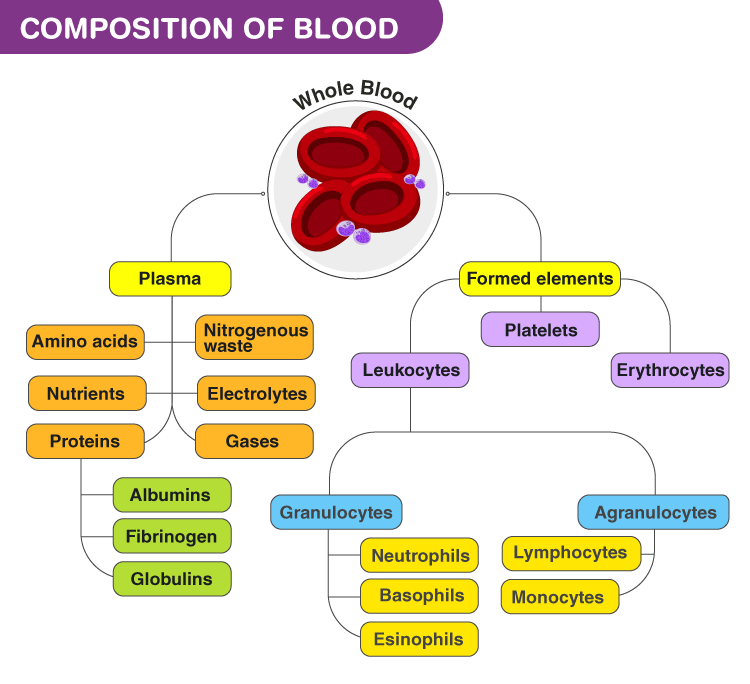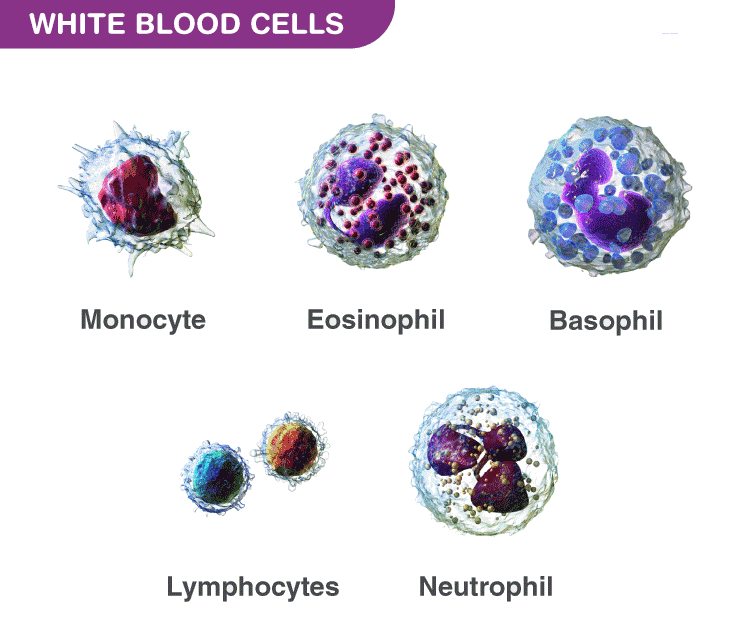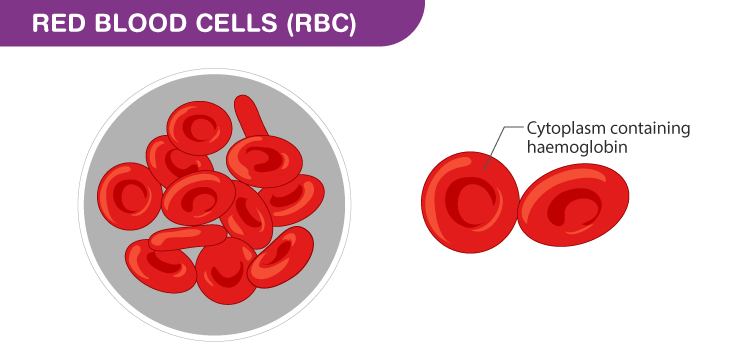Contents:
Blood is a connective tissue comprised of various components, each with its own unique structures and functions. The three main components of blood are red blood cells (RBCs), white blood cells (WBCs), and plasma.

White Blood Cells (Leukocytes)
White blood cells, also known as leukocytes, are a vital component of the immune system. They are responsible for fighting off infections and diseases in the body. There are different types of white blood cells, each with its own specific functions. There are five different types of WBCs:
1. Neutrophils: Neutrophils are the most common type of WBC, making up 50-70% of the total WBC count. They are the first responders to infections, as they quickly move to the infected area and engulf bacteria and other harmful substances. They also release chemicals that can kill bacteria, and this is known as the “respiratory burst.”
2. Eosinophils: These WBCs make up 2-4% of the total WBC count. They are responsible for fighting parasitic infections and are also involved in allergic reactions.
3. Basophils: Basophils are the rarest type of WBC. They make up less than 1% of the total WBC count and are involved in allergic reactions. They release histamine, which causes inflammation and increased blood flow to the site of an infection or injury.
4. Lymphocytes: Lymphocytes make up 20-40% of the total WBC count. They are responsible for recognizing and destroying foreign substances, such as viruses and cancer cells. There are two types of lymphocytes: B cells and T cells. B cells produce antibodies, which attach to specific pathogens and destroy them. T cells directly attack infected or cancerous cells.
5. Monocytes: Monocytes make up 2-8% of the total WBC count. They are responsible for phagocytosis, or engulfing and digesting bacteria, viruses, and other foreign substances.
Overall, white blood cells play a critical role in protecting the body against infections and diseases.

Red Blood Cells (Erythrocytes)
Red blood cells, also known as erythrocytes, are the most abundant cells in the body, making up approximately 40-45% of the total blood volume. Their primary function is to transport oxygen from the lungs to the body’s tissues and carbon dioxide from the tissues to the lungs. Red blood cells contain hemoglobin, a protein that binds to oxygen and makes it possible for oxygen to be carried in the blood.
Red blood cells are produced in the bone marrow and have a lifespan of approximately 120 days. They are then removed by the liver and spleen, and their components are recycled.

Platelets (Thrombocytes)
Platelets, also known as thrombocytes, are small fragments of cells that are formed in the bone marrow. They play a critical role in blood clotting, which is essential for preventing excessive bleeding after an injury.
When an injury occurs, platelets accumulate at the site and begin to form a platelet plug. This plug helps to stop the bleeding by sealing the injured blood vessels. The platelets then release chemicals that attract other blood clotting factors, leading to the formation of a fibrin clot that further reinforces the plug.
Plasma
Plasma is the liquid component of blood, making up approximately 55% of the total blood volume. It is a yellowish fluid that consists mainly of water, electrolytes, hormones, glucose, and plasma proteins.
Plasma proteins are essential for maintaining the osmotic pressure of the blood and transporting various substances, such as hormones, nutrients, and waste products. The three main types of plasma proteins are albumin, globulins, and fibrinogen.
– Albumin makes up approximately 60% of the total plasma protein. Its main function is to maintain the osmotic pressure of the blood, which is essential for maintaining proper fluid balance within the body.
– Globulins are responsible for transporting various substances, such as hormones, vitamins, and minerals. They also play a critical role in the immune system by binding to antibodies and helping to destroy foreign substances.
– Fibrinogen is a plasma protein that is involved in blood clotting. It is converted to fibrin during the clotting process, which forms the fibrin clot.
Functions of blood:
1. Transport of Oxygen and Carbon Dioxide: The RBCs transport oxygen from the lungs to the body tissues and carry carbon dioxide, a waste product, back to the lungs for elimination.
2. Immune system function: The WBCs act as a defense mechanism for the body against foreign invaders.
3. Regulation of body temperature: Blood helps regulate body temperature by absorbing heat generated within the body and transporting it to other parts of the body to be released.
4. Nutrient and waste transport: Blood carries nutrients such as glucose, amino acids, and lipids to the body’s tissues and removes waste products such as urea and lactic acid.
5. Clotting: Blood clotting prevents blood loss when a blood vessel is injured. This is achieved through the presence of blood-clotting factors in the plasma and platelets, which form a clot.
6. Maintaining pH and electrolyte balance: Blood helps maintain pH and electrolyte balance by transporting electrolytes and buffer molecules that help regulate pH and ion concentrations in the body.
References:
- https://www.kenhub.com/en/library/anatomy/types-of-cells-in-the-human-body
- https://classnotes123.com/composition-of-blood-class-10
- https://www.numerade.com/ask/question/part-a-1-true-if-statement-is-correct-2-false-if-statement-is-not-correct-a-original-statement-copy-and-paste-the-original-statement-b-corrected-statement-change-the-statement-so-that-it-is–33186